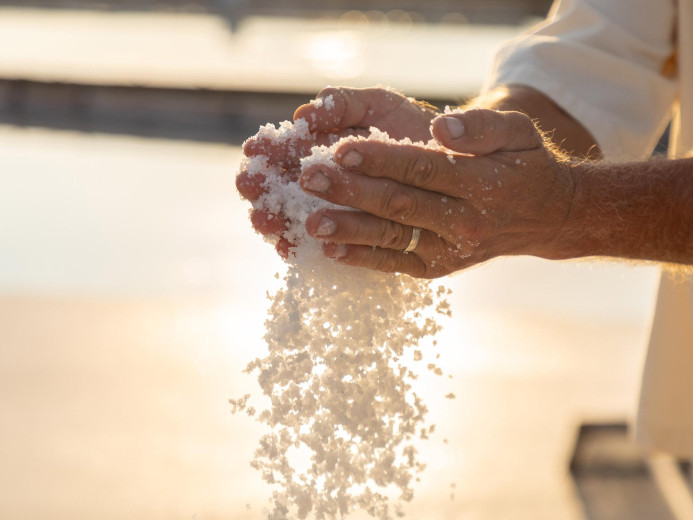Date: 17. April 2024
Time to read: 5 min
Salt works have been an important economic industry in Piran's thousand-year history, which is why the Salt Works Festival is one of the most important tributes to the history and identity of the town and its inhabitants.
Saltworks Feast on the Feast of St George
Since in 1343 the people of Piran chose St George as their patron saint, who, according to legend, saved the town and its inhabitants from a catastrophic storm, the event is called the "Saltworks Feast of the Feast of St George". Every year on 23 April, in Tartini Square, which for many is the living room of Piran and is also known as the most beautiful Slovenian seaside square, a "Saltworks Labyrinth" is set up, made up of cavedins (crystallisation shafts). Here, you can learn a lot about saltworks, salt, ecology, the plants and animals that live in the salt marshes, as well as about the microplastics that permeate our everyday lives. You can also try your hand at working with a gaver, a wooden scraper used by the salters to push the salt in the crystallisation shaft into a pile and form a gruma (a pyramid-shaped pile).
A heritage of exceptional importance
The cultural heritage of the Piran Salt Pans reflects the centuries-old life and work of the salt workers of the Northeastern shores of the Adriatic Sea. Of the once numerous salt pans in the Gulf of Trieste, only those in Sečovlje and Strunjan have survived, making their testimony even more precious. It places them at the level of ethnological, technical, historical, built and landscape heritage of exceptional importance.
The immovable cultural heritage of the salt pans includes the salt fields, the canals and banks with stone walls, steps and sluices, the salt houses and their surroundings, the paths, bridges, pumps, etc.
The Strunjan and Sečovlje salt pans are among the only salt pans on the eastern coast of the Adriatic Sea where salt is produced using traditional methods throughout the process, with daily harvesting in brine on a bio-sediment - the petola.
-
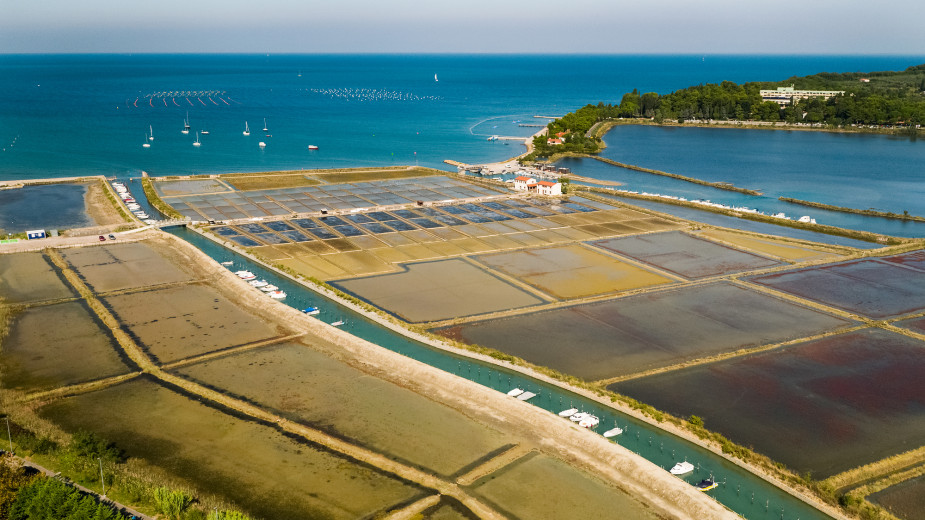 For centuries, the salt marshes of the northern Adriatic have had a major impact on the economies of the countries and city states in the area. They have been the subject of political disputes and wars because their usefulness made salt a valuable raw material and a strategic trade commodity, important for preserving food and for the production of gunpowder. Photo: Dražen Štader
For centuries, the salt marshes of the northern Adriatic have had a major impact on the economies of the countries and city states in the area. They have been the subject of political disputes and wars because their usefulness made salt a valuable raw material and a strategic trade commodity, important for preserving food and for the production of gunpowder. Photo: Dražen Štader
-
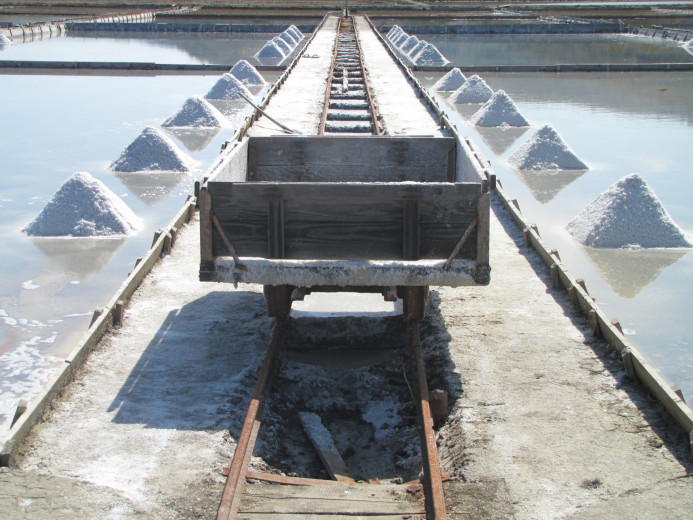 Salt is produced in salt fields, which comprise evaporation and crystallisation ponds. Seawater is fed from the evaporation ponds to the crystallisation ponds either by free-fall or by pumps. Photo: Sečovlje Landscape Park
Salt is produced in salt fields, which comprise evaporation and crystallisation ponds. Seawater is fed from the evaporation ponds to the crystallisation ponds either by free-fall or by pumps. Photo: Sečovlje Landscape Park
-
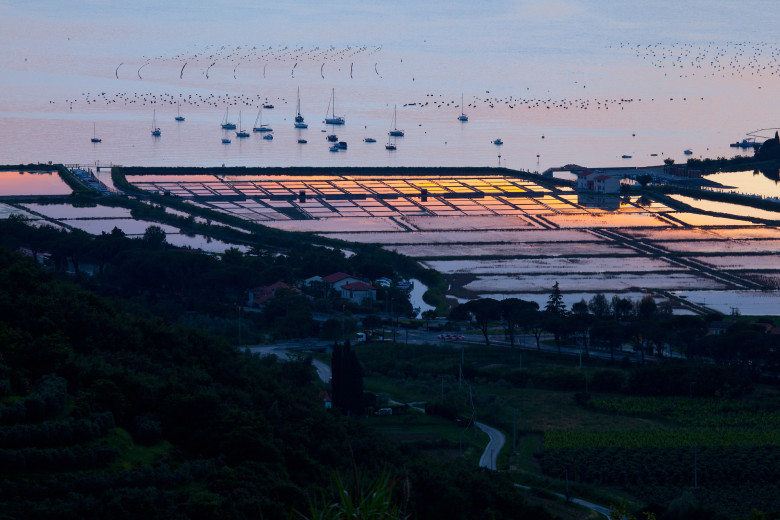 An old Istrian superstition says that salt should not be given because it is said to bring bad luck. It can be sold or lent. Photo: Jošt Gantar
An old Istrian superstition says that salt should not be given because it is said to bring bad luck. It can be sold or lent. Photo: Jošt Gantar
-
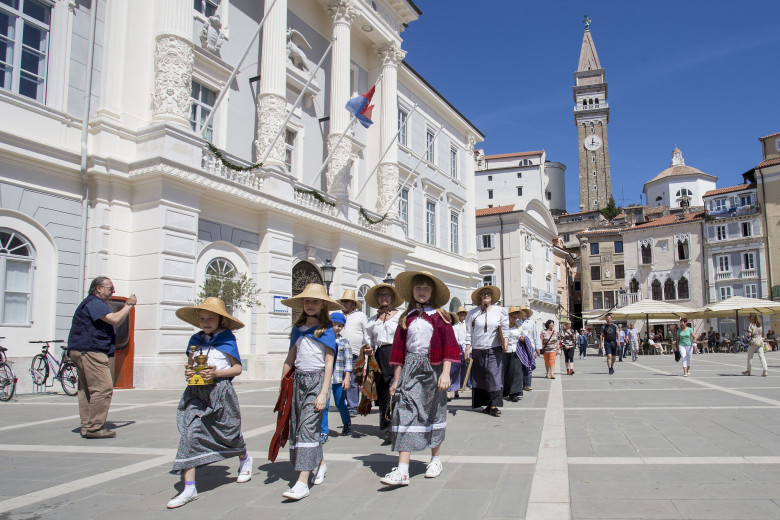 The people of Piran want to celebrate this holiday as a tribute to all those who have in any way been part of this millennium-old story. Photo: Urban Urbanc
The people of Piran want to celebrate this holiday as a tribute to all those who have in any way been part of this millennium-old story. Photo: Urban Urbanc
A treat for gourmets
The Sečovlje and Strunjan salt pans are the only salt pans in this part of the Adriatic that still produce salt, preserving the traditional production process of daily salt harvesting.
Today, the economic role of the salt pans is subordinated to the nature conservation and cultural role: the quality and mineral content of the salt produced is a delicacy for gourmets; the preservation of the salt-pans supports the awareness of cultural heritage; and the salt pans provide shelter for rare or special species of flora and fauna, while at the same time they are a preserve for man of an ecologically noble living environment and a reminder of the once rich Mediterranean cultural heritage and landscape, which is sadly disappearing.

